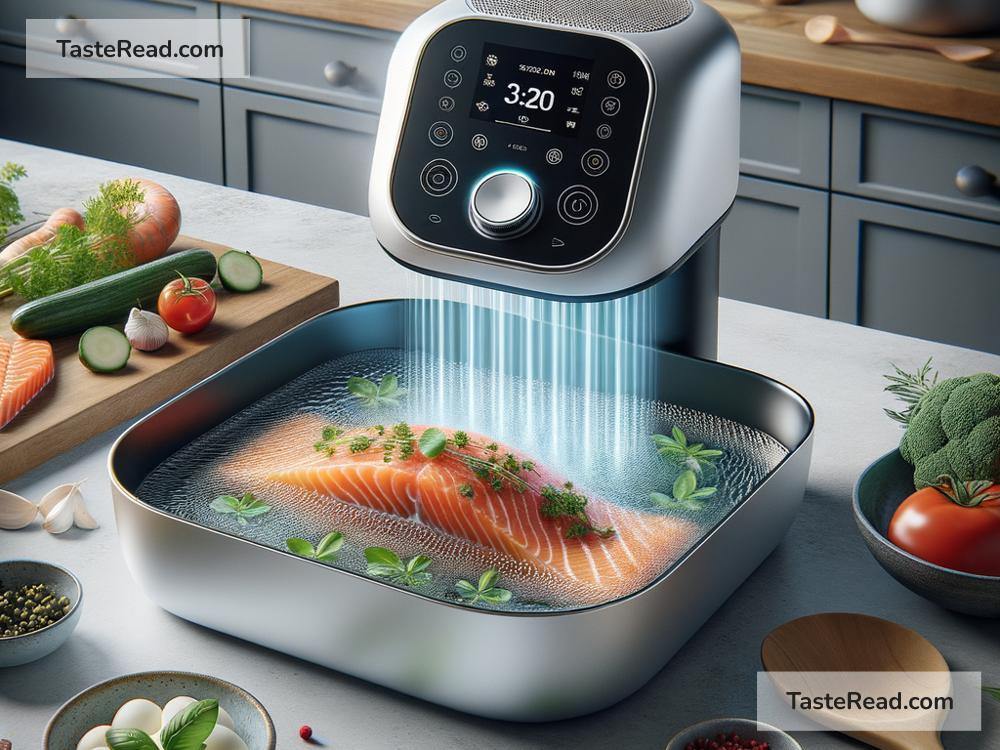The Science of Cooking with Ultrasonic Waves: Techniques and Tips
Cooking is an art, but it’s also deeply connected to science. Every time you grill, boil, or bake something, you’re using heat, chemistry, and physics to transform raw ingredients into tasty dishes. But what if there was something more cutting-edge? What if you could use ultrasonic waves—or sound waves—to take your cooking to the next level?
In this blog, we’ll explore the exciting science behind cooking with ultrasonic waves, how this technique works, and share some simple tips for using it creatively in the kitchen.
What Are Ultrasonic Waves?
Before diving into the cooking part, let’s first understand what ultrasonic waves are. Ultrasonic waves are sound waves with very high frequencies—so high, in fact, that humans can’t hear them. While our ears pick up sounds ranging from 20 Hz to 20,000 Hz, ultrasonic waves go beyond 20,000 Hz.
These powerful waves can create vibrations and energy that stimulate molecules. That might sound complicated, but essentially, ultrasonic waves can break things down, speed up reactions, and blend materials. That’s why ultrasonic technology is used in industries ranging from medicine to manufacturing—and now, in modern kitchens!
How Ultrasonic Waves Work in Cooking
Cooking with ultrasonic waves doesn’t involve fancy music or soundtracks. Instead, chefs use devices called ultrasonic processors or ultrasonic baths. These machines generate vibrations that pass through liquids, food items, or ingredients.
Here are some key effects ultrasonic waves can create in the world of cooking:
-
Cavitation: Ultrasonic waves produce tiny bubbles in liquids—a process known as cavitation. When these bubbles collapse, they release energy that can break down food particles or emulsify liquids (combine two liquids that usually don’t mix, like oil and water).
-
Tenderization: Ultrasonic vibrations can help soften tough meat fibers, making them more tender without the need for long marinades or cooking processes.
-
Extraction: Ultrasonic waves are great for extracting flavors, nutrients, or oils from ingredients. For example, you can extract essential oils from herbs like basil or rosemary quickly and efficiently.
-
Infusion: Ultrasonic waves can help push liquids into food, which leads to faster marination or infusion of flavors. Imagine getting the same results from marinating a steak in minutes instead of hours!
-
Blending and Mixing: These sound waves can mix liquids, solids, or powders at the molecular level, creating smoother textures for sauces, purees, or batters.
Uses of Ultrasonic Waves in Cooking
Now that you know how ultrasonic waves work, let’s look at the ways they’re used in the kitchen. While these techniques may seem futuristic, they’re already being adopted by experimental chefs and food science enthusiasts around the world.
-
Making Emulsions: Ultrasonic waves are used to create creamy and stable emulsions, like mayonnaise and salad dressings, without the need for added stabilizers or lengthy whisking.
-
Tenderizing Meat: Tough cuts of meat can be softened using ultrasonic vibrations, making them juicy and flavorful. This can save time and introduce incredible new textures.
-
Speeding Up Marination: Whether you’re marinating chicken, fish, or vegetables, ultrasonic waves speed up the infusion of flavors. You could marinate food in minutes instead of hours!
-
Flavor Extraction for Cocktails: Bartenders use ultrasonic waves to extract fresh, concentrated flavors from fruits, herbs, and spices for mixed drinks.
-
Infusing Oils or Vinegars: You can quickly create flavored oils (like garlic-infused olive oil) or vinegars by using ultrasonic waves to draw out flavors from ingredients.
-
Improving Textures: Ultrasonic processing can yield super-smooth soups, creamy sauces, and evenly blended batters for desserts.
Tips for Cooking with Ultrasonic Waves
While this technology is exciting, it does require some specialized equipment and a little practice. Here are some tips to get started:
-
Start Small: Begin with basic recipes, like emulsifying salad dressings or creating infused oils. These are simple ways to understand how ultrasonic waves affect your results.
-
Invest in the Right Equipment: You’ll need an ultrasonic device like a bath or processor. Look for models designed for food applications. While high-end models can be pricey, there are affordable options for beginners.
-
Experiment with Liquids: Ultrasonic waves work best in liquids, so focus your initial experiments on dishes like soups, marinades, sauces, cocktails, or purees.
-
Watch for Consistency: It’s easy to overprocess food using ultrasonic waves. Start with short bursts of time and add more if needed to avoid ruining textures.
-
Safety First: Be careful when handling ultrasonic equipment. Follow instructions for operating the device safely. Keep in mind that ultrasonic waves can sometimes generate heat, too.
-
Have Fun and Be Creative: Don’t be afraid to try new ideas! This technology offers exciting possibilities for modern cooking.
Why Is Cooking with Ultrasonic Waves Exciting?
Ultrasonic cooking is cutting-edge and innovative. It challenges traditional methods by speeding up processes, enhancing flavors, and unlocking new textures. While it may still be limited to experimental kitchens now, it shows how science and technology are changing the way we cook food.
So, whether you’re curious to try it at home or simply fascinated by the science of cooking, ultrasonic waves are bringing a fresh and futuristic perspective to the culinary world. Who knows—one day, this could become as common as using an oven or blender!
Cooking is always evolving, and ultrasonic waves are proof that science is a big part of that journey. By understanding how sound waves work in the kitchen, you can experiment, enhance your dishes, and wow people with your creativity. Sound waves may be invisible to the eye, but their effects on food are impossible to miss!
Ready to explore the future of cooking? Let’s make some noise in the kitchen—ultrasonically, of course!


